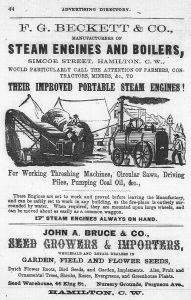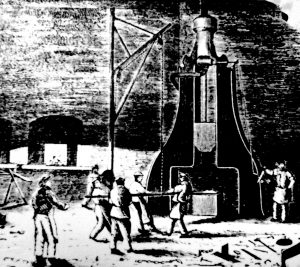Life on the New Shop Floor
These first “manufactories” were small by 20th-century standards. But they seemed new and different at the time. Work time and free time were set off by bells and whistles. Discipline on the shop floor was strict. Piecework was introduced to get workers to move faster. A work day on the shop floor often lasted 10 to 12 hours, six days a week.
Some factories had fancy, steam-powered machinery to replace human muscle-power and skill. But most employers just divided the work up differently, spreading skilled tasks out among unskilled, poorly paid workers. Factory owners whittled away at apprenticeships and took advantage of unskilled workers to reduce their reliance on highly paid skilled workers. Work was also dangerous. Workplace accidents and fatalities were common: workers, even children as young as 13 or 14 years old, lost limbs or their lives.
Many of the changes in the workplace were aimed at undermining the traditional control of craftsmen. But most industries still had to rely on these skilled workers’ know-how. In fact, the Industrial Revolution brought more skilled workers to Hamilton than ever before, especially in the metalworking trades. Moulders, for example, were central to the working life of the city until well past 1900.




